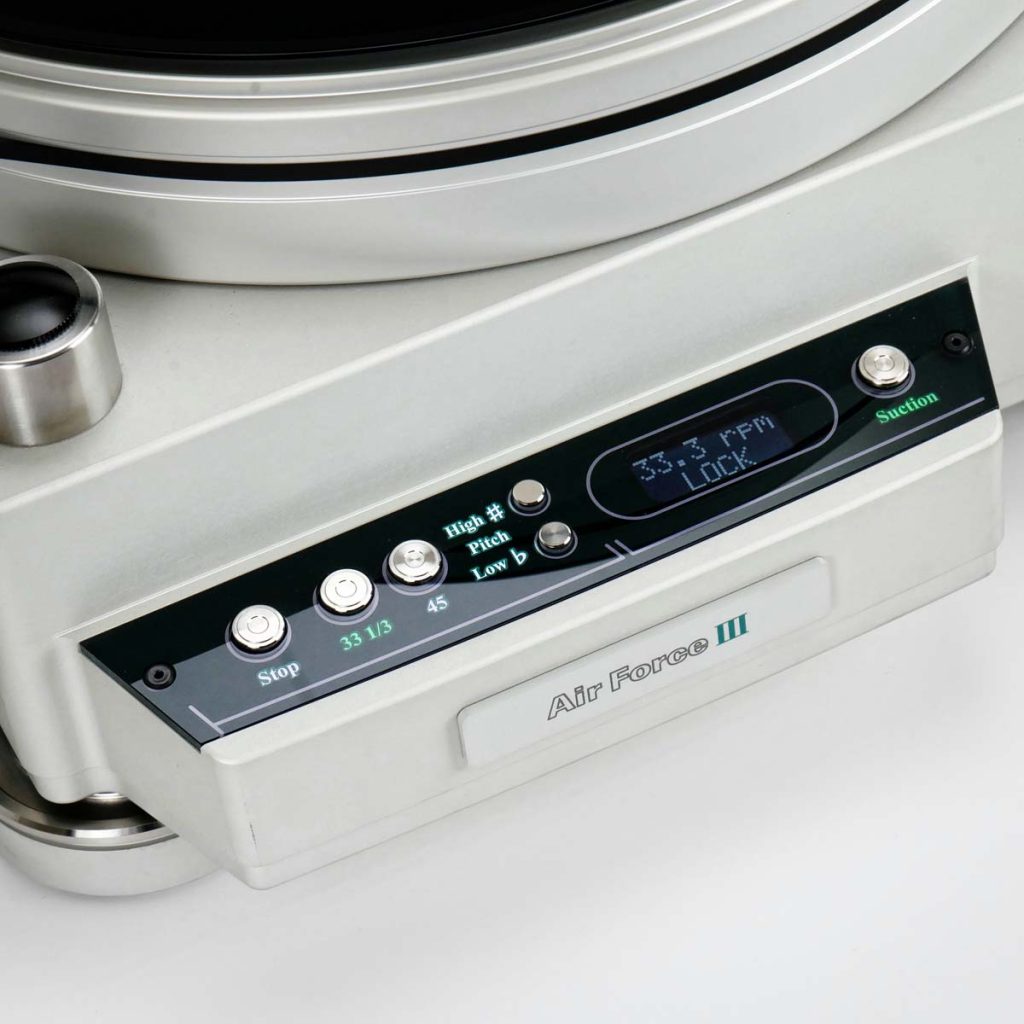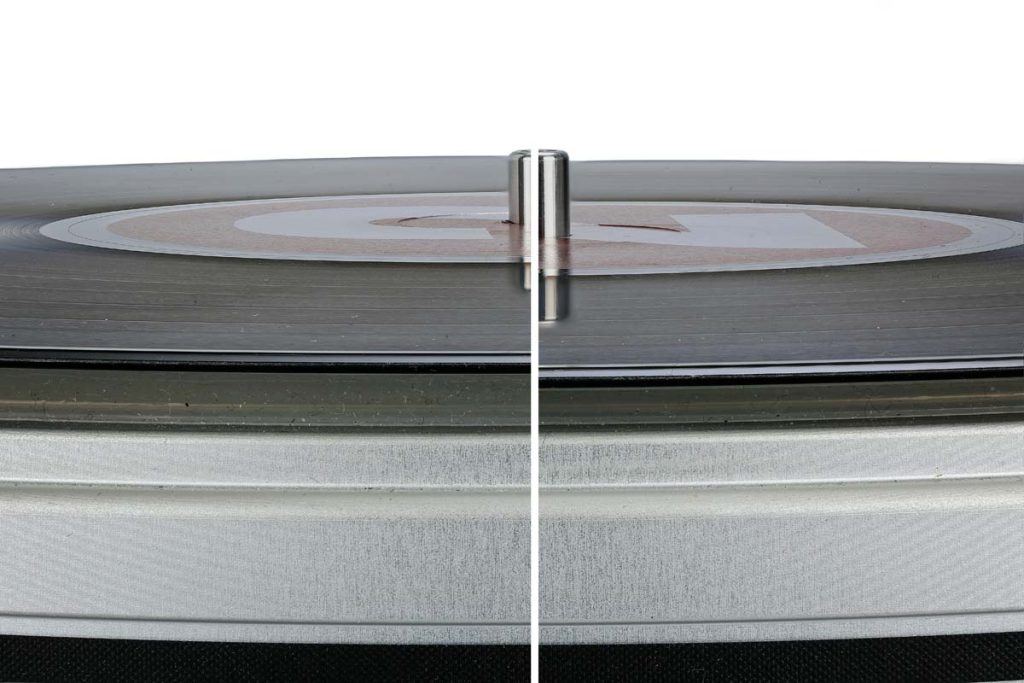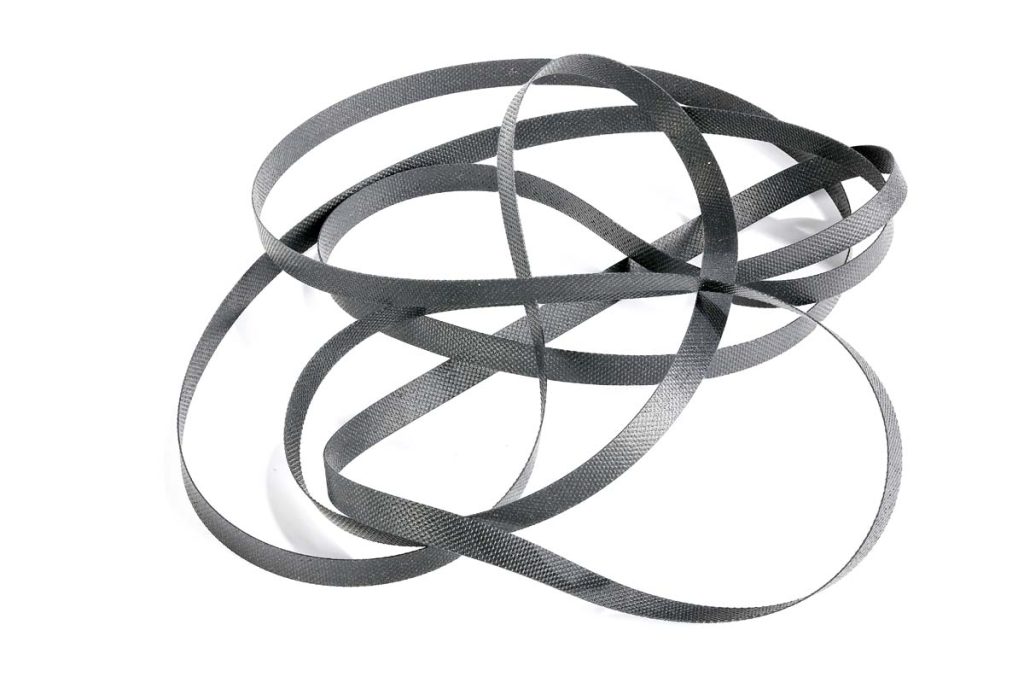Air, Water, Zen
Over the last years, a Japanese importer who spends his retirement building sophisticated turntables has been creating quite a stir in the high-end scene. Why are high-end fans so excited? Hideaki Nishikawa had at one time designed the massive turntables produced during the later years of Micro Seiki.
During the heyday of vinyl and shortly before it was stabbed in the back around 1980 by a ruthless parvenu called the CD, Japanese companies were demonstrating what has become a characteristically high-end obstinacy by stubbornly building analog turntables that were eclipsing all that had gone before. The trouble was, nobody wanted to buy them anymore. Renowned manufacturers turned to other disciplines, or disappeared completely, including such legendary names as Nakamichi, Hitachi, ELP, C.E.C., and Micro Seiki, which, supported by its broad product range, was perhaps the best-known brand of the time, proved to be a further victim. Times were far from rosy even then, of course: The world market was highly competitive, and managers were looking to slash costs everywhere. And large companies faced even greater cost pressure than smaller ones. Micro Seiki had been trying for years to establish itself on the market for low-cost turntables and had been manufacturing products for other brands. But while German turntable firms such as Thorens, Dual, and Perpetuum Ebner (all back in business thanks to the analog revival!) are remembered primarily for their popular, inexpensive products, Micro Seiki’s brand image has been shaped by its brilliant nonsuspended turntables that often never even reached the German market. These were products like the SX 8000 or 8000 II, the SX 5000 II, and particularly the RX 5000 — which looks most similar to the Air Force III, but actually has the least in common with it. All these turntables were developed by Hideaki Nishikawa, now CEO of Stella Inc., which produces the in-house brand TechDAS.
Ideas that endure
There’s nothing particularly new about the Air Force III. You can see all its design features in the Micro Seiki SX 8000 II: the square base, the air bearing, the vacuum disc suction mechanism, the external drive unit (the original had a DC motor instead of a synchronous AC motor). The 8000 II had even demonstrated how to create space for air ducts in its complex bearing: by attaching the spindle in the final setup step, only stopping the current 9-kilogram aluminum platter from taking off when the compressed air cushion is activated. These great ideas have been around for a long time. The fact they have lost none of their fascination and relevance is actually a real slap in the face for the new analog school that has emerged since the 1990s. Returning to the scene after 35 years, Nishikawa says he was waiting for the necessary technology to reach maturity — which is Zen in its purest form.
If you wait by the river long enough, the corpses of your enemies will float by …
… and their pierced, lifeless bodies will shine like silver in the red of the morning sun. This “wait until everything works itself out” attitude is inherent to Asian philosophy. But whatever you do, don’t try to force things! So, while Nishikawa was patiently waiting for advances in vacuum technology, his archenemy, the CD, suddenly started to fall out of favor. In 2013, the time had finally come to unleash the Air Force One on the world, closely followed by the scaled-down but, in my opinion, all the more attractive Air Force Two. The product we are testing, Air Force III, is therefore the second downgrade. Its compact housing boasts almost all the important features of the Air Force One but at a quarter the price. TechDAS has announced the release of an Air Force Zero later this year to extend the upper end of it its product range.
Controlling the airspace
The Air Force III’s compressor sucks and blows like a Dirt Devil. But as it’s more modern than a vacuum cleaner, it can even do both simultaneously and independently of each other. Two PVC lines (marked “V” for vacuum and “F” for floating) lead from the air-cooled compressor to the matching valves in the turntable’s base. Adjacent to these lines is a serial connection cable that controls the compressor and powers the turntable. Another control cable runs from the turntable base (which also houses the motor control) to the separate motor casing. The platter only moves when the compressor is running, first beginning to levitate when a 30-micron cushion of compressed air is pumped between the glass subplatter and the aluminum platter. This process is actually quite soundless. The compressor vibrates softly on the back of your hand, but the rest is all silent. Above the aluminum platter, the exact opposite happens. Also compatible with the old Micro Seiki turntable, two sealing lips on the label and outer edge suck the record down onto the platter when a button is pressed on the front panel. This suction button then changes color to green, and a brief plaintive cry, something akin to a startled guinea pig, is the only sound you hear from this amazingly smooth turntable mechanism. Extreme force would now be needed to remove the record from the platter, which is secured by a vacuum with controlled leakage rather than one with a hermetic seal. One of the most important innovations in this TechDAS turntable is a tiny film of compressed air between the platter and the record that absorbs vibrations from the pickup. Keeping the surface of a platter as clean as possible is obvious; with this method of operation, though, it’s absolutely critical. The powerful vacuum does not, however, have a problem evening out slight warps in records, and you can also apply a bit of extra pressure if necessary. But even seriously warped vinyl can be played, of course; the Air Force III works without the vacuum as well, and the optional disc stabilizer is highly recommended.
Torque or vibration-free operation …
… seems to be the ultimate question in current turntable development. The Air Force III effortlessly delivers a sufficient measure of both. Enclosed in a massive housing, the powerful synchronous motor with its own power stage drives an extremely thin, rigid polyurethane belt attached to a groove in the rim of the platter. You can adjust the distance between the motor housing and the platter if you want to, but there’s no real optimum distance. You need to find a good compromise between adequate belt tension and maximum operational smoothness. The position of the pulley itself can also be adjusted to within a range of about 2 centimeters using a grub screw. This gives you somewhat more space if you really want to attach four tonearms. The success of your adjustment efforts can be seen in the speed adjustment menu on the front display. Once the displayed speed settles into the correct value, you can save the adjustment with the memory function. The motor responds immediately, cutting tension by around 50% to only just maintain the speed. The sluggish control loop with hall sensor is ideally only needed to check that the adjustment is correct. If all this happens within 30 seconds, no problem. If it takes longer, you can adjust the drive belt tension. The normal rule of thumb — that a string drive should have around a finger’s breadth of play in it — also applies to the Air Force III. Should you encounter any unexpected problems, you can run a short routine called “tension adjustment mode“ to help you.
Room for improvement
For improvements to the mechanical stability of Air Force III, a glance at the turntable’s larger brothers is all that’s necessary. The major differences include weight and the cleverer way in which the siblings are decoupled from the mounting surface. One strategy worked for me at least. Although the Air Force III worked perfectly in the solid steel rack, a finger tap test yielded a somewhat noticeable effect on the speakers. Attaching an additional heavy base from Subbase Audio brought an immediate improvement. With a bit of effort and tinkering, the Air Force III could definitely be improved even further. Who knows. It may even be possible to reach the standard of the Air Force II through clever positioning.
Curtain up …
For the Air Force III’s debut, we assembled a suitable reception committee in our listening room. Although it’s an integrated component, the MC preamp in the Tidal Preos is one of the best phono amplifiers on the market. You can only really assail the Soulution 511 stereo power amplifier and the amazing Yvette from Wilson Audio by employing farfetched arguments based on taste. Apart from the five-pin tonearm cable, all cabling comprises premium components from AudioQuest or HMS. There’s even a Quantum Noise Resonator blinking away on the window side of the room. All in all, a fabulous environment in which to conduct our in-depth listening test.
The Tonearm — the grandmasters assemble
Just a few words about the special 9-inch tonearm, the first to carry the Einstein label. Volker Bohlmeier from Einstein Audio is even talking about a 12-inch version farther down the road (he regards a 10-inch model as a feeble compromise and refuses to consider it). Called “The Tonearm,” it’s a relatively new product. It has a solid bearing block located above the pivot and a thinly dampened double tube with stainless steel on the outside and aluminum on the inside. Like The Pickup cartridge, built by Ortofon, they don’t make The Tonearm themselves. If the company needs expertise outside its own core amplifier area, Einstein makes no bones about looking for outside help. This enables the relatively small manufacturer to offer nearly a complete range of products. For the tonearm, Volker Bohlmeier managed to obtain the assistance of another legendary figure from the analog scene in Japan, where high-end had its origins. Akiko Ishiyama has made products for such companies as Ikeda and Lyra. And some enthusiasts may have heard his name in connection with classic products from Fidelity Research. As far as looks go, The Tonearm boasts a particularly idiosyncratic, angular design. We’ll probably be looking at Einstein’s Tonearm in its own right in an upcoming issue. So for the moment, let’s just say that the German distributor enabled two grandmasters of the Japanese audio tradition to come together in our Air Force III configuration. With these legends on your side, what could possibly go wrong?
… Clear the stage
While conducting my tests, I saw no reason whatsoever to make any changes to this winning team of tonearm and pickup. If you had also heard the first notes emanating from the Air Force III, I’m sure you would have felt the same: everything should stay exactly as it. Unfortunately, you couldn’t be there with me. Every now and then, we encounter a sublime high-end device that’s simply above reproach. Rather than being sensational in its own right, true high-end often involves an absence of distinct attributes. In terms of sound, everything we could specifically single out about Air Force III would be rendered less true through the very act of calling attention to it. All the same, I’ll give it a try. The complete sense of calmness this device exudes is easy to miss, but is particularly significant. While it’s not exactly the black canvas we are familiar with from established nonsuspended turntables, the lead-in groove emanates pure, unadulterated stillness. After hearing just the first few notes, it becomes clear that categorizing the Air Force III will be a problem. On Bettye LaVette’s “Do Your Duty,” you can admire the brass section’s expansive tones — sensual yet light-handed — but the horns make their entrance blaring like the Seventh Cavalry. The Yvette pampers us with a palette of tones and substance that extends to the deepest levels. Teaming up with the Soulution power amplifier, the pure energy it manages to generate from this 1960s production is simply overwhelming. The Swiss power amp is so good there is only one possible criticism that could be made of it: Five decades down the road, neither the singer nor the producer would have never wanted us to hear their music this way — the unmasking of all its imperfections, overmodulations, gloomy echoes and wildly enthusiastic drumming. Nevertheless, the soul diva’s indestructible voice can be heard in shades ranging from brittle to tenacious. The impression of a well-rounded stage performance is even greater when Carla Thomas calls Otis Redding a “tramp.” Both singers seem to stand farther apart than usual while still remaining in a well-defined oval from which only the rhythm section makes thrilling and dynamic attempts to escape. This sudden, extreme dynamism does seem to be a special feature of the Air Force III. But, unlike many snappy turntables, even in this situation it doesn’t seem to take a step nearer to the listener. This Japanese powerhouse never loses its cool, remaining a confident and sovereign baseline player at all times.
Empty your mind, be formless, shapeless — like water. Be water, my friend.
The source of this quote (Bruce Lee) and the Air Force III share one thing in common: They can instantaneously pacify a room in just one surprise attack. And, upon reflection, water is also the only true metaphor that can apply to the Air Force III. Pliant and yielding, these apparent weaknesses are actually the turntable’s real strengths. Water always finds the path of least resistance. It prevails and exploits an opponent’s strengths to its own advantage. Sparkling, water can flow through a thin straw, but it can also cut deep valleys through mountains. It refreshes swimmers with a soft place to land when they take a dive from a 3-meter board, but feels like concrete to those divers who take a record jump from 50 meters or higher. Water has no attributes that aren’t contradicted by other characteristics. Even its physical state is changeable. And not to be forgotten: Water is where life began, and it remains indispensable to everything that has emerged from it. In the beginning was clean, pure water. Shouldn’t a turntable be like crystal-clear water? With a cool, fresh breeze blowing?
Accompanying Equipment
CD player: Marantz HD-CD1, Audio Note CDT Three, Audio Exklusiv P8 | DAC: Soulution 560 | Integrated amplifier: Cayin CS100A | Preamp: Tidal Preos | Power amplifier: Soulution 511 | Loudspeakers: Wilson Audio Yvette | Cables: AudioQuest, HMS | Accessories: Sieveking Quantum Noise Resonator, Isotek Aquarius Evo3, Subbase Audio, Solidsteel
Turntable
TechDAS Air Force III
Functional principle: belt-driven nonsuspended turntable | Drive: synchronous motor with own DC power stage | Material: aluminum | Speed: 33 or 45 rpm | Special features: air-cushioned platter, vacuum disc suction mechanism, space for up to four tonearms, Micro Seiki DNA | Dimensions (W/D): 55/40 cm | Weight: 35 kg (including motor unit) | Weight PSU and compressor: 9 kg | Warranty period: three years | Price: € 26,500
Tonearm
Einstein Audio The Tonearm
Functional principle: gimbal pivot tonearm | Length: 9-inch | Materials: aluminum, stainless steel | Warranty period: five years | Price: € 6200
Cartridge
Einstein Audio The Pickup
Functional principle: MC cartridge | Output voltage: 0.4 mV | Weight: 13 g | Warranty period: three years | Price: € 4400
Einstein Audio Components GmbH
Prinz-Regent-Straße 50–60
44795 Bochum
Germany
Phone +49 234 9731512





































